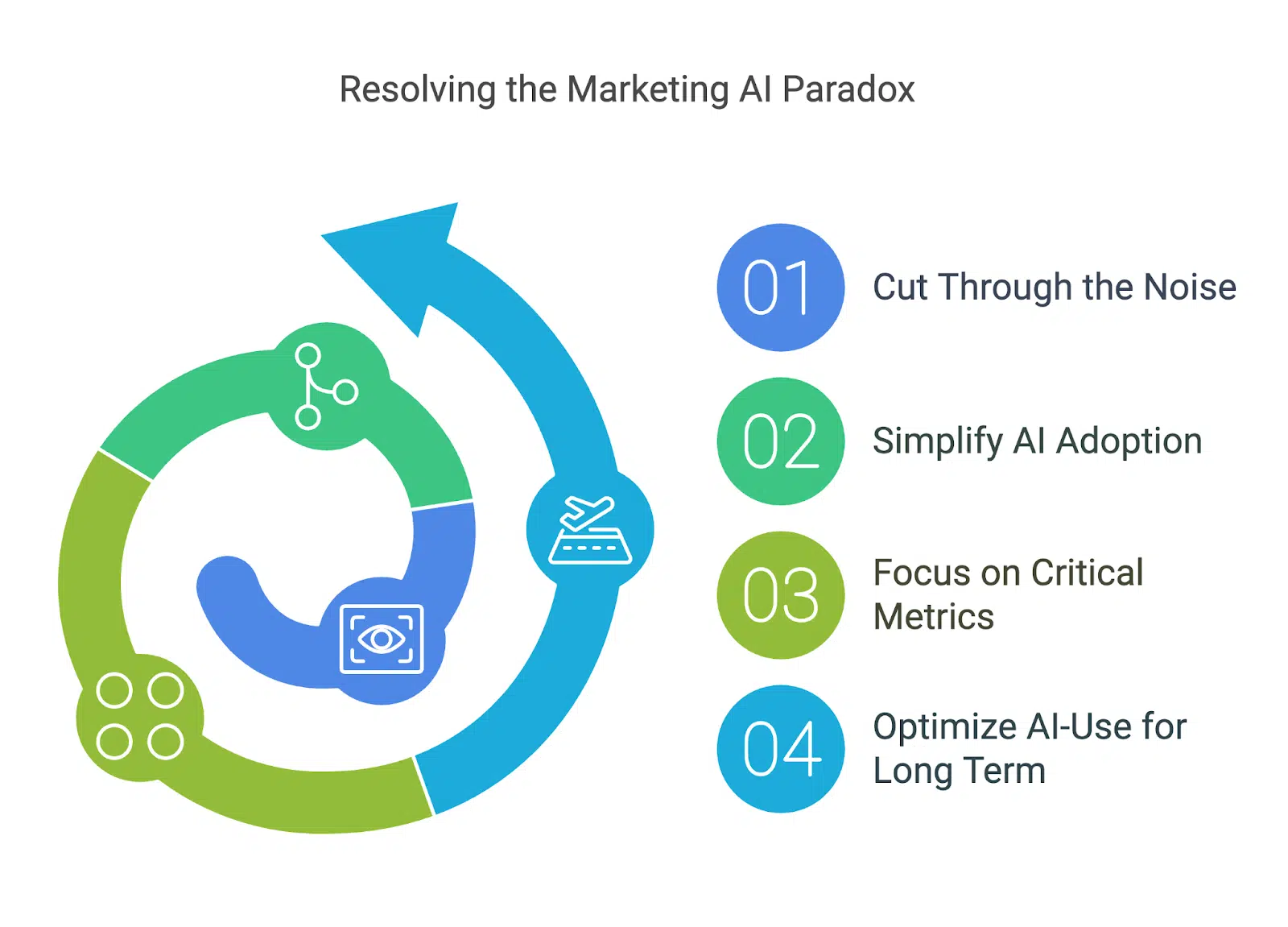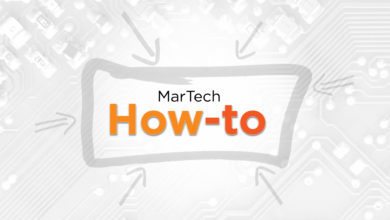Don’t have time to implement time-saving AI tools? Here’s what to do.

An overwhelming workload prevents marketers from learning or implementing AI tools that can reduce this load. This, in a nutshell, is the “marketing AI paradox”.
How can marketers break this cycle? Here is a structured and practical approach to overcoming the paradox and leveraging AI.


Step 1: Eliminate low-value activities
Most marketing teams must manage tasks that add little or no business value. Identifying and stopping these activities can save a lot of time for higher value-added work.
Start by auditing your team’s routine. Identify unproductive meetings, unnecessary reports, or stakeholder requests that offer minimal feedback.
Collaborate as a team to highlight time-wasting activities and prioritize their elimination. With honesty and rigor, most teams can free up 10 to 50% of their available time. Redirect these reclaimed hours toward strategic efforts, including AI implementation.
Usable information: List the top five activities that you think waste the most time. Assess their necessity and make plans to stop or streamline them.
Dig Deeper: AI Readiness Checklist: 7 Key Steps for Successful Onboarding
Step 2: Simplify AI adoption
AI often seems intimidating due to concerns about complexity, data privacy, and intellectual property. However, starting small and focusing on simple, high-impact tasks can make adoption easier.
Automate tedious tasks: Delegate repetitive or unpleasant tasks to AI tools. For example, designers can use Canva’s Magic Studio to automate image resizing for various platforms. Identify similar tasks that don’t require a lot of supervision and are easy to assign.
High-impact pilot use cases: Instead of launching multiple AI initiatives, start with one or two that match your team’s capabilities and produce tangible results.
Practical training: Focus training efforts on immediate and practical applications. Short sessions (90 to 120 minutes) tailored to specific tasks may be more effective than in-depth theoretical programs.
Address privacy concerns later: Start with use cases that don’t involve sensitive customer data or intellectual property. For example, use AI for creating audience-facing content or automating internal processes.
Usable information: Choose a small, low-risk task that your team is struggling with and explore AI solutions to accomplish it in a week.
Dig Deeper: Why starting small with AI pilots before scaling up is a mistake
Step 3: Prioritize critical metrics
Marketers often juggle multiple goals and metrics. To avoid spreading your efforts too thin, focus on the metric most important to your organization’s success. Use AI to drive measurable improvements in this area.
For example, if customer acquisition is the priority, implement AI tools for personalized ad targeting or lead scoring. It may seem risky to deprioritize other indicators. Remember that most marketing effects – positive or negative – manifest themselves over time. So you have time to figure out which ones matter and which ones don’t.
Usable information: Identify your team’s most critical metric and consider three AI-driven strategies to improve it in the next quarter.
Dig Deeper: Essential KPIs for measuring the success of generative AI in marketing
Step 4: Plan long-term AI integration
The first steps to overcoming the AI paradox prioritize quick wins. However, lasting success requires a long-term approach, including:
Form an AI governance council to establish policies. Conduct marketing process audits to identify new automation opportunities. Develop a comprehensive AI strategy and roadmap.
While these activities are essential, they can be postponed until your team gains confidence in early AI implementations. The key is to start small, but remain committed to scaling up over time.
Usable information: Schedule a quarterly review to evaluate your AI initiatives and draft a long-term roadmap by the end of the year.
Dig Deeper: Safeguards and governance: how to protect your brand while using AI
Free yourself from the paradox
Addressing the marketing AI paradox requires courage and discipline. Marketers can save time and achieve greater productivity by eliminating low-value activities, starting small with AI, focusing on key metrics, and planning for sustainable integration.
Contributing authors are invited to create content for MarTech and are chosen for their expertise and contribution to the martech community. Our contributors work under the supervision of the writing and contributions are checked for quality and relevance to our readers. The opinions they express are their own.



